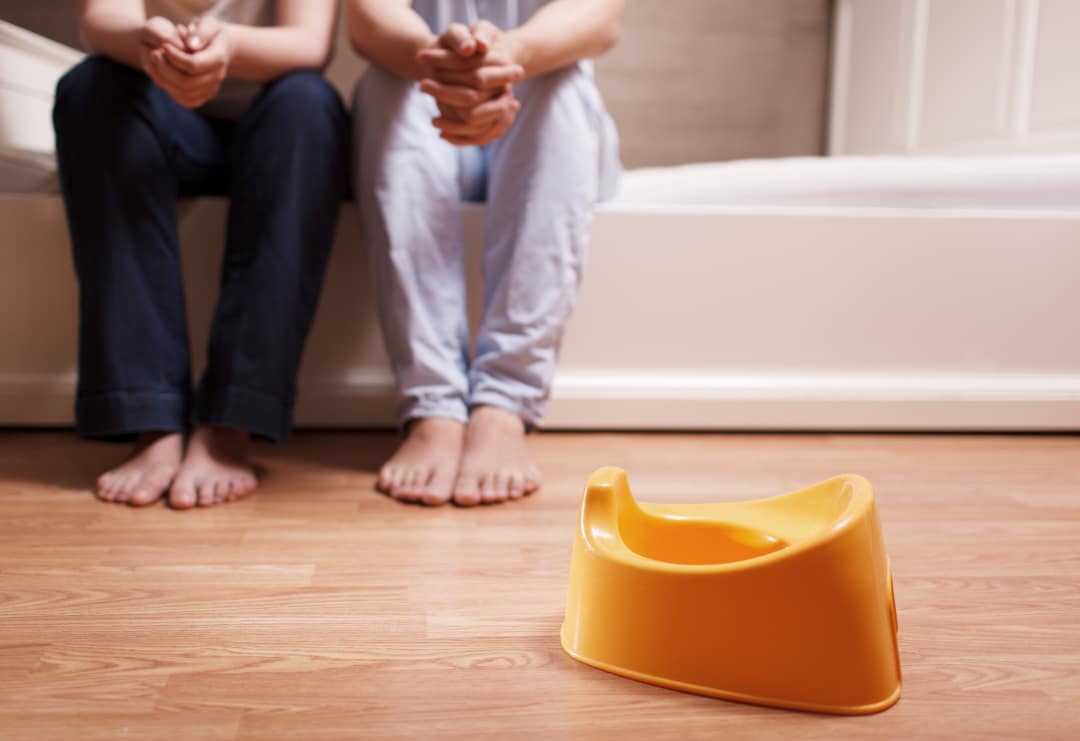Getting tired of changing diapers? You’re thinking about potty training, but is your toddler ready yet? Read these tips if you are asking yourself, “When Should I Potty Train My Toddler?”

When Should I Potty Train My Toddler?
When is the best time to toilet train a toddler? The best answer is: when your child is ready. But when is that? Here are some signs that he or she is ready to start making the transition.
Signs a Child is Ready for Potty Training
Potty Talk: He talks about using the potty. He might talk about parents using the potty, but he might take earlier notice if there’s a sibling who uses the potty. He might even ask if he can use it – if so, get to it!
More Potty Talk: She talks about peeing and pooping. Of course, this also happens a lot more frequently when an older sibling is around. But this awareness is a sign that she might be ready.
Awareness of Bodily Functions: He knows right when he’s about to go. He might stop what he’s doing to poop, or she might go to a special corner. You might encourage this awareness by commenting to him that he’s just peed or that he’s pooping.
Control of Bodily Functions: When your toddler stays dry for at least two hours at a time, she has some control over her bladder. This is a good sign that potty training can commence! It’s also a good sign if your child has a bowel movement around the same time every day.
Potty Play: She imitates going to the potty. This is a great time to let her go try the real thing (or the pseudo-real thing like a potty chair)!
Dirty Diaper Intolerance: He shows signs that he’s uncomfortable in a dirty diaper. He might even try to take off his diaper as soon as it’s wet or dirty. This is a big green light to start potty training.
Remember that’s it’s not so much about age as it is about your toddler’s behavior. Here are some things you can do to speed up readiness.
Speeding up Toilet Training Readiness
Let your toddler walk around undressed. Seeing urination happen raises awareness in light speed.
When she poops in her diaper, go together to dump it in the toilet. This helps make an abstract idea about pooping in the potty become more real.
Encourage independence. Remind your child that he is a big boy or that she is a big girl. Talk about using the potty in a positive way.
Watch animals (pets) go to the bathroom to raise awareness if you feel this could be helpful! As silly as it sounds, it may help!
Readiness is one thing, but the actual potty training is another! There are many different methods, and you might try different ones until you get into a groove.
I hope these tips help you decide if it’s time to consider potty training your toddler!
More Potty Training Tips:
Potty Training Tips for Public Restrooms
Leave a Reply